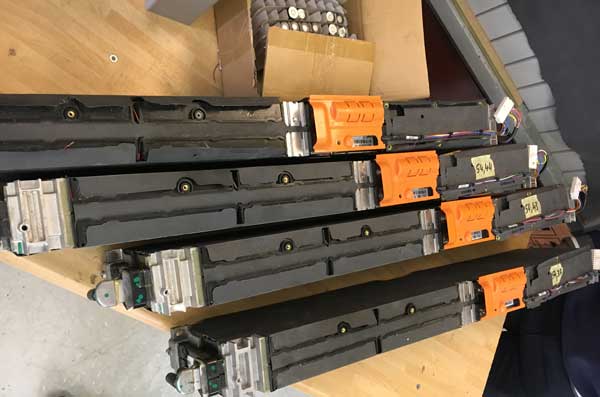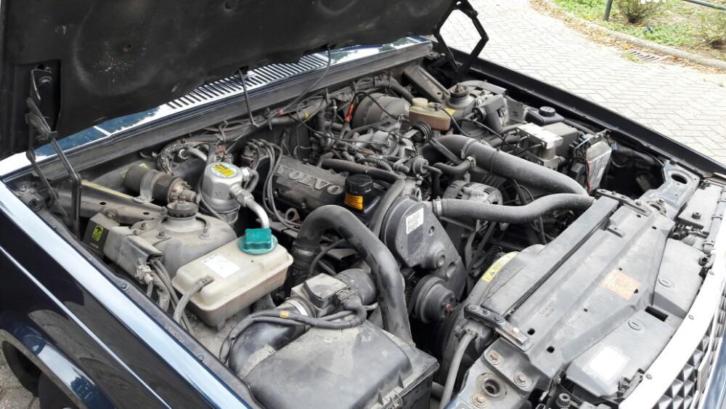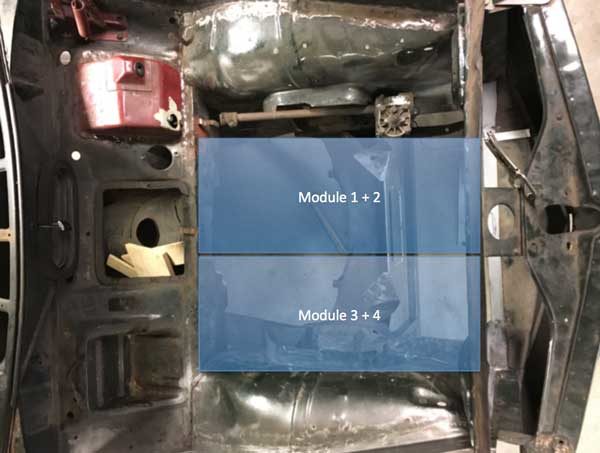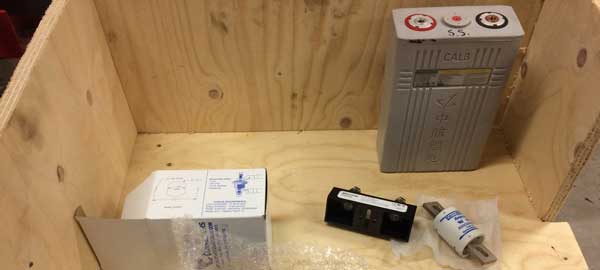When I started in 2015 after one reconnaissance I had not foreseen the parts for the conversion to electrical purchase that I would first be working on an almost two-year restoration. However, this also turned out to have an advantage.
New developments in the market: better batteries
Technological developments in the market are fast and electric cars have been around for some time now. As a result, more and better components are becoming available for the do-it-yourself conversion market. A good time to reconsider. At the beginning of 2015, the standard was still CALB cells, large blocks weighing 3,4 kg each, of which I would then need 90.
Less than two years later, used Tesla batteries were gradually coming onto the market. Initially mainly from the Smart Electric Drive where Tesla made the battery modules for Mercedes, but later also from the Tesla Model S. Batteries from a Nissan Leaf or Renault Zoe were not findable for me at that time so I did not include them in the comparison in 2017.
| Battery | Energy density | Number and weight | Capacity | Estimated range |
|---|---|---|---|---|
| CALB 100 Ah | 94 Wh / kg | 90 x 3,4 kg = 304 kg | 29 kWh | 88 km |
| Tesla Smart EV | 157 Wh / kg | 12 x 19 kg = 229 kg | 36 kWh | 120 km |
| Tesla Model S | 212 Wh / kg | 8 x 25 kg = 200 kg | 42 kWh | 153 km |
All batteries have their own advantages and disadvantages. The CALBs are heavy, the Smart EV batteries are long and the Tesla Model S batteries have a low voltage per module.

Given the high energy density, I opted for the battery modules from the Tesla Model S. The knife then cuts on two sides. On the one hand, consumption will decrease due to the lower total weight and, on the other hand, capacity will also increase, which will have a twofold positive influence on the expected range.
Tesla batteries puzzle
This started a new chapter with regard to both the placement and use of the battery modules. With a Tesla, 16 modules lie like a “skateboard” in the middle of the floor. With a Volvo Amazon that will not work without drastic changes. The perfect spot is then in the back on the spot of the fuel tank and spare wheel and in the front on top of the engine.

Not only in terms of physical placement do Tesla battery modules have the necessary implications, they are also fundamentally different in terms of use than the CALB blocks.
Battery management system
All batteries in series give a certain end voltage. However, you never know the exact contribution of the individual cells to arrive at that end voltage. It can happen that due to capacity differences one cell is already full (and therefore at its maximum voltage) while another is not. However, this is not reflected in the overall effort. These CALB batteries are so stable that you can relatively safely assume that you can stop charging when the end voltage has been reached. Not only is the chance of mutual differences small, the consequences of overcharging or discharging in addition to breaking the cells are also not that great. This is a different story with the type of batteries in a Tesla module. Ignition can occur if individual cells are overcharged.

This makes monitoring of individual cells crucial. That is, insofar as they are connected in series. Parallel-connected cells automatically balance themselves. Monitoring cell voltages is therefore also a primary function of the battery management system. In addition, this system also monitors the temperatures and can intervene on the basis of both voltages and temperature to prevent unsafe situations.
How sustainable is an electric car / old-timer anyway?
Some will appreciate the intended result and the technical challenge of a conversion, just like me. Others abhor the thought of an electric classic car and loathe batteries. Perhaps interesting to explain how sustainable an electric car or old-timer actually is.
A classic with which only a few hundred kilometers per year is driven, naturally has a negligible impact on total CO2 emissions, even if it runs 1 in 6. As soon as a car and perhaps a youngtimer in particular is used for daily use, it becomes a different story. Let me use our own situation as a calculation example. We drive an average of 25.000 km per year in a Volvo 940 on LPG and this is usually something of 80 km per day.

As soon as the electric Volvo Amazon combi is finished, this will be our first car and it will replace the Volvo 940.
| Volvo 940 | Electric Amazon | |
| Consumption | 1 liter of LPG at 9 kilometers | 200 Wh per kilometer |
| Per year (25K km) | 2778 liters of LPG | 5000 kWh |
| Co2 emissions | 5017 kg CO2 per year | Gray power: 3245 kg CO2 per year Solar energy: 350 kg CO2 per year |
I have calculated the CO2 emissions based on the CO2 emission factor list and chose the Well to Wheel approach. This means that the entire chain of production of the LPG or electricity, including transport and recycling, is included. That is why the CO2 emission when driving on solar energy is also not 0 because the production and recycling of the solar panels is included. Incidentally, this is a 'worst case' approach because, for example, wind energy and hydropower energy have much lower CO2 emissions in the production and recycling chain.
The above calculation shows that even when charging with gray electricity, the CO2 emissions in the electric Volvo Amazon are lower than in the Volvo 940. Now that might not completely compare apples with apples because a Volvo 940 is a heavier and larger car. An electric Volvo 940 is expected to have a consumption of 270 Wh / km and therefore with 25.000 km on gray electricity a CO2 emission of 4380 kg CO2 and on solar energy 480 kg CO2 so bottomline still a lower emission.
Next time
In the next episode (tag # old volvo-electric) more about the Tesla battery module placement in the car. Missed the previous one? Check the reports here on AMK van restoration part 1, part 2 en part 3 or my plan for one electric Volvo Amazon combi or the initial conversion steps. Would you like to preview or view more details? The project can be found at www.oudevolvo.nl/ev-combi




I have been waiting for the next episode for a while ..
Well.